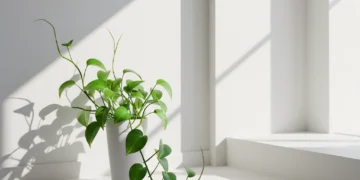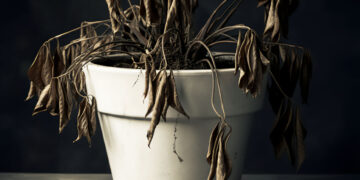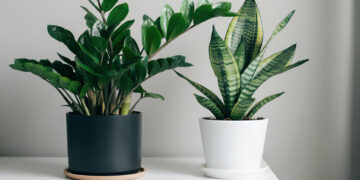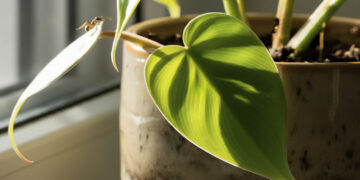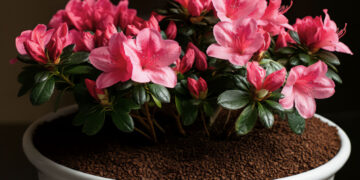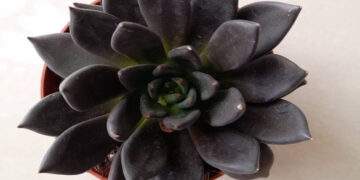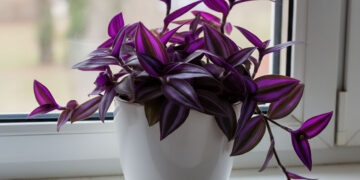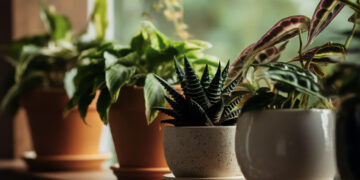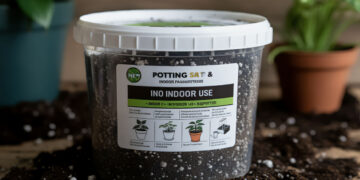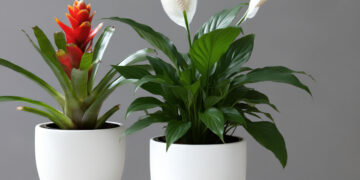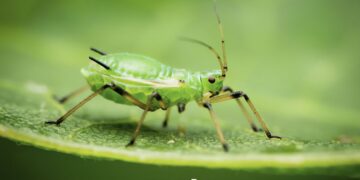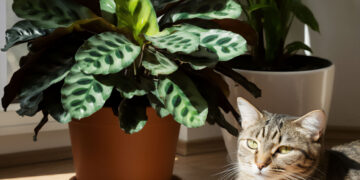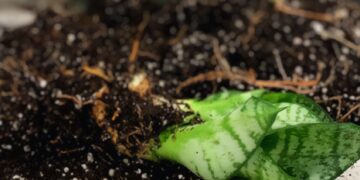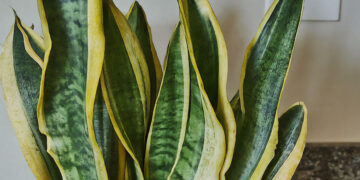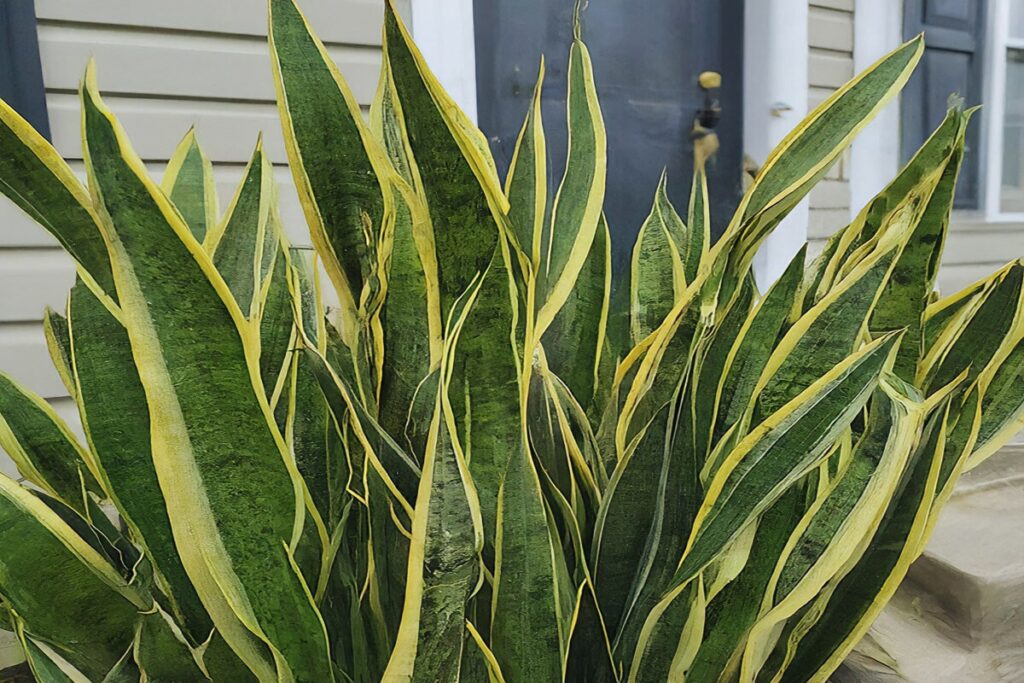
You usually see unique snake plants in apartments and offices, which are green and beautiful. The strange thing that always catches everyone’s attention is whether snake plants can live outside or not. If you are also curious, let’s discover the beautiful features of the outside snake plant.
Can Snake Plants Live Outside?
Yes, definitely. Snake plants can grow well outside if the temperature is right. They thrive in warm areas with mild winters, like USDA hardiness zones 9-12. Snake plants don’t like temperatures below 50°F or 10°C for long because they are sensitive to cold. Remember, temperatures as low as 20°F or -6°C can be deadly for them.
Important tip: If your snake plant is in a pot, get it used to being outside step by step. First, put it in the shade for a few hours each day and slowly increase the time.
Thrive or Just Survive?
If you just want your snake plant to be alive, keep it indoors, but if you wish to flourish and thrive, take it outside. Snake plants grow larger when planted outdoors under favorable conditions, reaching 3 or 4 feet or 90-120 cm in height. Sometimes, it is even seen growing up to 180 cm, but I have never seen it that tall myself.
When can we plant or transfer snake plants outside?
Spring, right after the last frost, is the best time to plant or transfer your snake plant. growing in the spring allows it to adapt well to the summer season. The long days create excellent conditions for the plant to thrive.
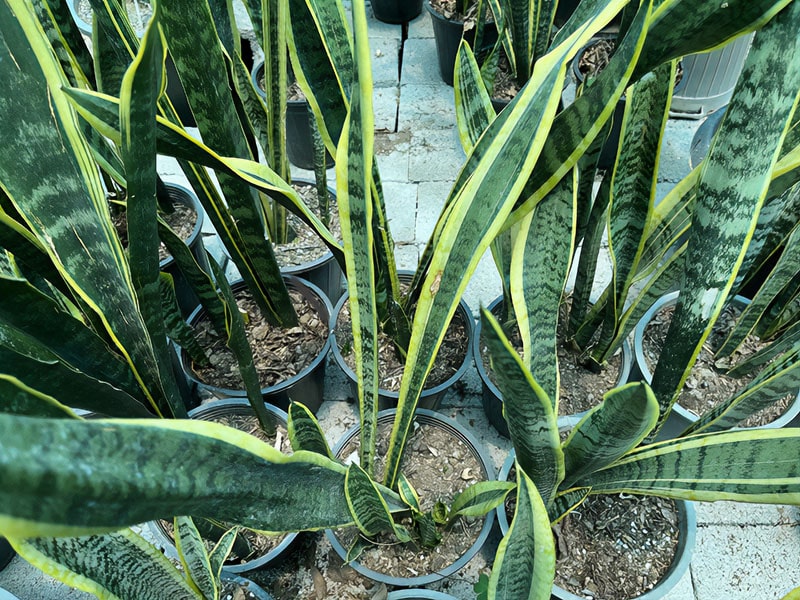
Optimal conditions for outdoor snake plants
Caring for outdoor snake plants is almost different from what we remember as regular snake plant care. If you check the essential factors affecting snake plant growth rate, you should provide ideal conditions and care for them; they will also thrive in gardens, patios, or balconies. These factors are:
Climate & Temperature Requirements
Snake plants can find quick and clever ways to overcome temperature fluctuations but not frost and cold. They can handle a range of temperatures from 55°F to 85°F or 13°C to 29°C. However, the cold, which means temperatures below that, makes the leaves dark and mushy. So, when the weather is cold, put them in a sheltered place or cover them with frost cloths And if they are in pots, bring them inside.
Lighting requirements with sunbeams
Although, When it comes to snake plant light needs, snake plants can tolerate a range of lighting conditions, snake plants outdoors prefer partial shade or dim sunlight, which is best for them to grow. Place them somewhere they receive morning sun and afternoon shade. If snake plants are in full sun, they may get stressed, and their leaves will become crisp, yellow, or white.
Proper Type of Soil for Snake Plant
Snake plants need well-draining soil with a slightly acidic to neutral pH (5.5 to 7.5). So, use a sandy or loamy soil mix and double soil drainage by adding coarse sand, perlite, or pumice. In this case, the snake plants will not suffer from snake plant root rot.
Watering methods
Depending on the weather and rainfall, water the Snake plants deeply but rarely, once every two to three weeks. Let the top 2-3 inches of soil dry out completely between two waterings. The hotter and drier the weather, the more water you have to give it. Keep in mind that the rains entirely meet the watering needs of the snake plant.
Pest attack and combat methods
Pests such as mealybugs, spider mites, and scale insects may attack snake plants and suck sap from the leaves and make them decolor and stop growing.
How to manage pests? Above all, make sure there is good air circulation around the snake plant and that the soil has good drainage. This will help you avoid overwatering it and attract pests. If you prune snake plants and regularly remove waste debris and dead leaves from the base, it will not suffer from pests. Maybe you could try removing pests by hand or using neem oil and insecticidal soap. Moreover, if all these methods do not work well, you can isolate the snake plant or aggressive treatment.
Timely fertilization
The best time to add snake plant fertilizer outdoor is during the growing seasons. Fertilize the snake plants from the beginning of spring to the start of autumn every 4 to 6 weeks so that they will benefit. Too much fertilization damages snake plant leaves and roots.
What fertilizer is suitable? A balanced, all-purpose fertilizer with an N-P-K ratio of 10-10-10 or 20-20-20, a diluted liquid every 4-6 weeks, or Organic fertilizers, such as compost, worm castings, or fish emulsion, are excellent options for environmentalists are highly recommended.
Humidity
The snake plant has no problem with low humidity. But if you live in a dry place, mist the leaves occasionally or use a humidity tray.
Pruning and Propagating Outdoor Snake Plants
Spring and summer are the growing season and the best time to propagate snake plant and pruning dead and damaged leaves to look neat and away from the danger of pests.
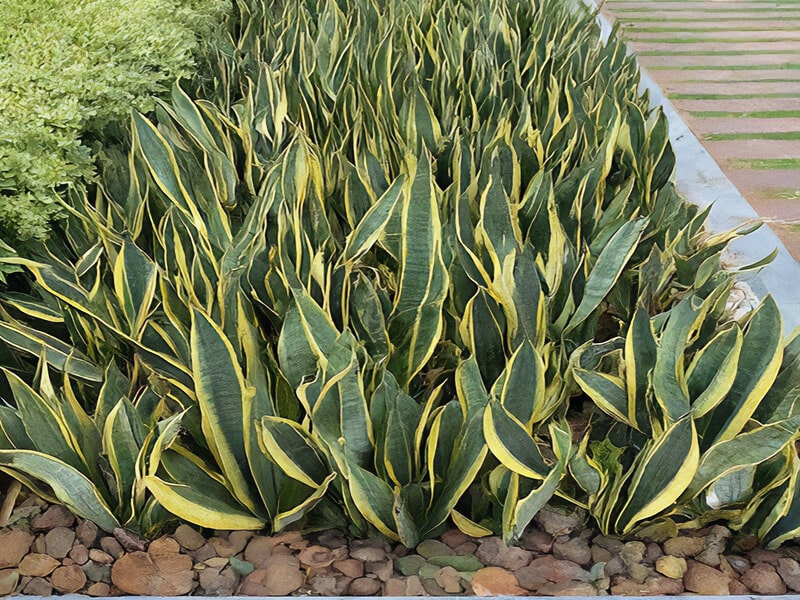
Garden bed for planting snake plants
According to the care tips, you are now sufficiently aware of what a suitable garden is and what primary conditions it should have. However, be careful that the soil is loose, not compacted, and has good aeration. Large containers, raised beds, or mounded soil can help with drainage. So first, dig a hole slightly larger than the root ball of the snake plant, place it in the hole, and fill it with modified soil.
Suitable snake plant varieties for outside
Unfortunately, not all types of snake plants can grow outdoors. Varieties like Golden Hahnii, Silver Flame, Twist, Moonshine, Black Coral, Jade Dwarf Marginated, and Bantel’s Sensation are better suited for indoor environments. They are sensitive, and wind and rain can damage their delicate leaves.
Expanding the garden
Suppose you want to have a beautiful garden and preserve the health of the garden ecosystem. In that case, you should plant similar plants together, and in the same way, plants with different needs as far away from each other as possible.
Snake plants pair well with Aloe vera, sedum lavender, Rosemary (I personally like it very much), yarrow blue fescue feather and reed grass.
Common Problems and Solutions
Leaf Curling
If you don’t focus on the watering tips, leave the plant in a hot place, and neglect the pest attack, the snake plant leaves curling occurs.
Brown Tips
Low water and humidity and increasing soil salt with fertilization will cause you to see brown tips on snake plants. In this situation, try to check water and moisture and flush the soil to remove excess salt.
Weeds problem
The problem I usually deal with is weeds. I get help from mulching. So, the temperature and humidity of the soil should be controlled so that the weeds do not have a chance to grow. Just apply one layer of mulch around the snake plant and do not put it directly on the base of it.
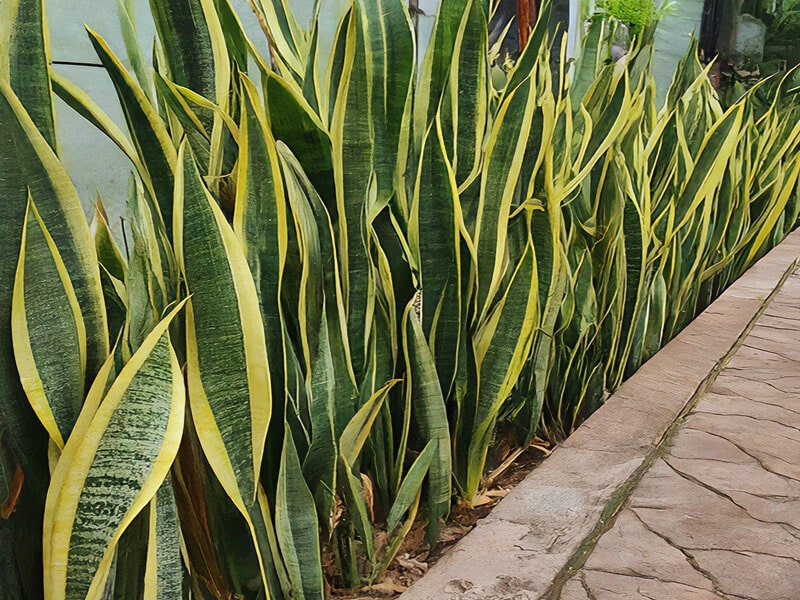
sources:
